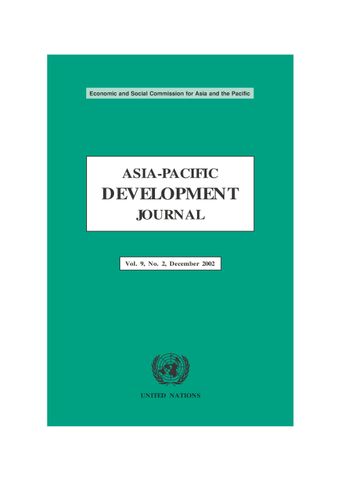-
Banking sector reforms in India and China: Does India’s experience offer lessons for China’s future reform agenda?
- Source: Asia-Pacific Development Journal, Volume 9, Issue 2, Aug 2003, p. 51 - 82
-
- 07 Aug 2003
Abstract
India and China both carried out banking sector reforms in the 1990s. Despite taking a gradual approach, India’s reforms have been the more comprehensive and have been implemented at a faster pace than in China. India’s experience suggests that the following four issues would be relevant in China’s future reform agenda: (1) privatizing the wholly state-owned commercial banks (WSCBs) and introducing measures to improve corporate governance; (2) removing Government intervention to make WSCBs more commercially oriented; (3) reducing the dominance of WSCBs by rationalizing weak banks and downsizing large WSCBs; and (4) if adopted, relaxing the stringent statutory liquidity requirement, which seems to discourage banks from lending. There are also lessons to be learned from India’s reforms. First, the entry of new banks should be promoted provided they are sufficiently capitalized and are technology-oriented. Second, diversification of banks’ business should accompany interest rate liberalization in order to compensate for the expected decline in net interest income and prevent banks from taking excessive risks. Third, strict regulations should be introduced to prevent connected lending.





